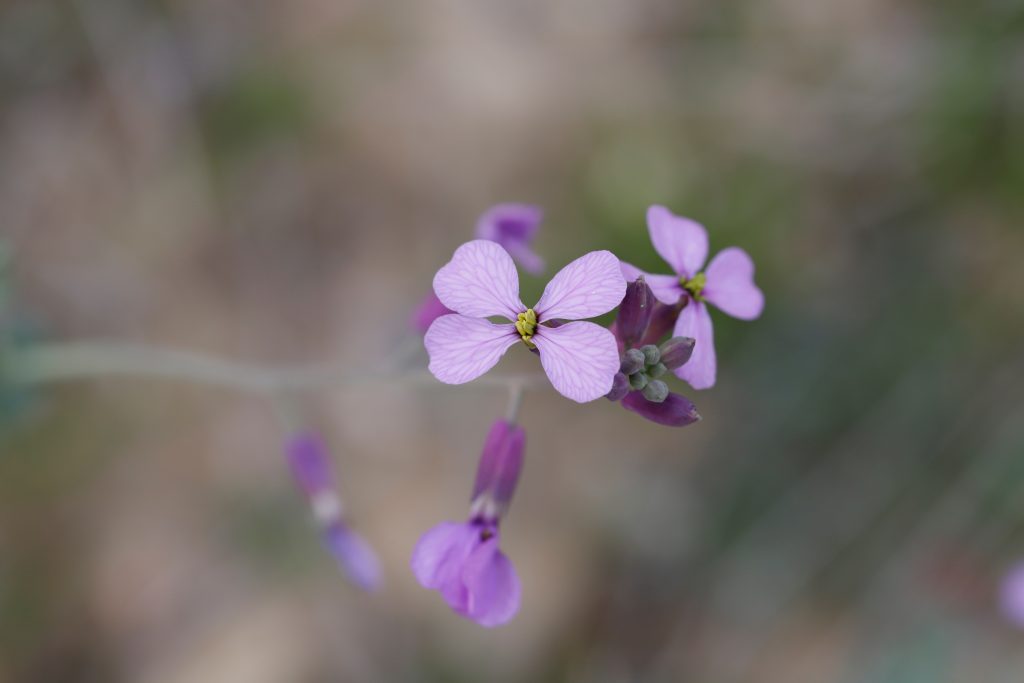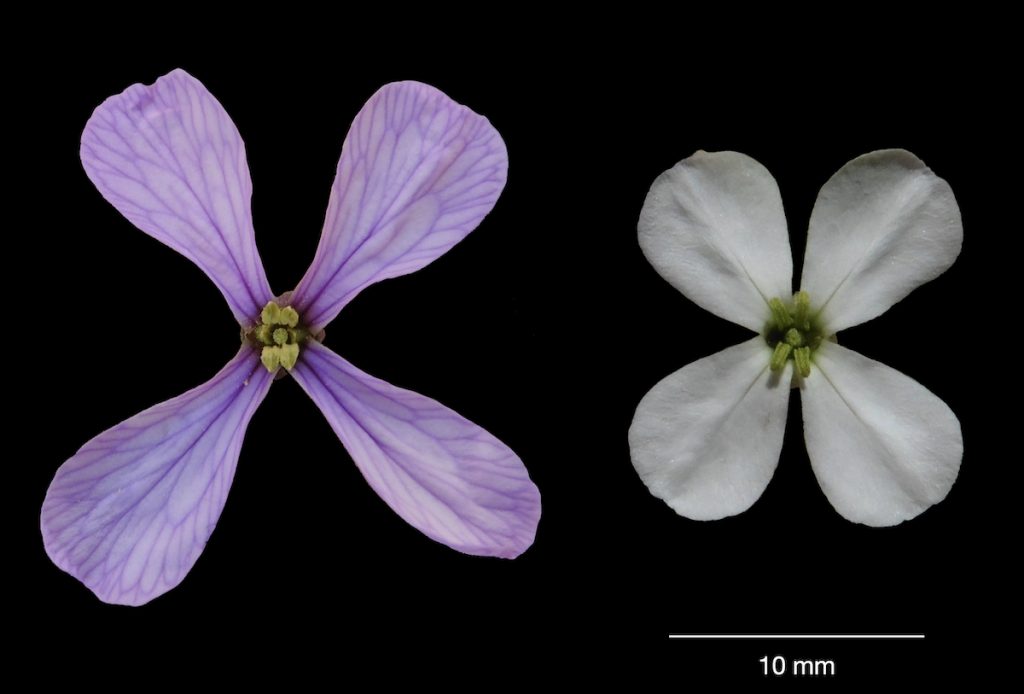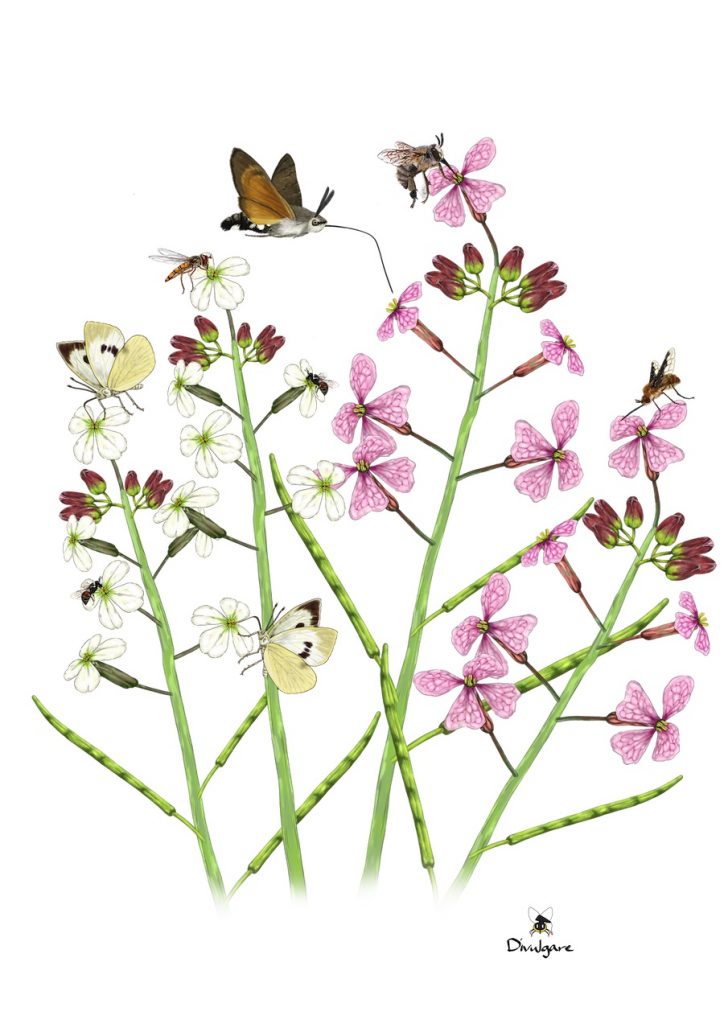Phenotypic plasticity is the ability of a genotype to produce different phenotypes in response to changes in the environment. This is an essential property of living beings but its role in adaptation and acclimatization to environmental changes is not yet fully known.

As part of a truly multidisciplinary team of researchers from the University of Granada, the Experimental Station of Arid Zones (CSIC) and the Universities of Vigo, Pablo Olavide and Rey Juan Carlos, we have just published an article in the top-ranking journal Nature Communications demonstrating experimentally, both in natural conditions and in the laboratory, the phenotypic plasticity of the flowers of a plant species living in semi-arid environments.

In spring, this species – the crucifer Moricandia arvensis – produces large, lilac-colored, UV-reflecting flowers in the shape of a cross. These flowers attract mainly large, long-tongued bees as pollinators. However, unlike most coexisting species, M. arvensis maintains flowering during the dry, hot summer of the western Mediterranean. This is due to its plasticity in key vegetative traits, including photosynthetic traits, that adjust its metabolism to these extreme temperatures and water deficit conditions. The summer’s high temperatures and longer light hours trigger changes in the expression of more than 625 genes in the flower that lead to these plants to produce different radical flowers. Whereas in spring flowers were large and cross-shaped, in summer they are small and rounded; whereas they were lilac and reflected UV, in summer they are white and absorb UV. These summer flowers attract a different set of pollinators composed of more generalist species. This change in the pollinator set (the pollination niche) allows this plant to reproduce successfully under the challenging summer conditions. Phenotypic plasticity for flower, vegetative, and photosynthetic traits seems to allow M. arvensis to cope with anthropogenic disturbances and climate change.

Gómez JM, Perfectti F, Armas C, Narbona E, González-Megías A, Navarro L, DeSoto L, Torices R (2020).
Within-individual phenotypic plasticity in flowers fosters pollination niche shift.
Nature Communications 11:4019
https://doi.org/10.1038/s41467-020-17875-1
Within-individual phenotypic plasticity in flowers fosters pollination niche shift
